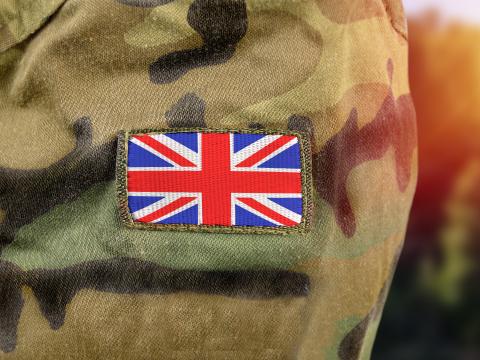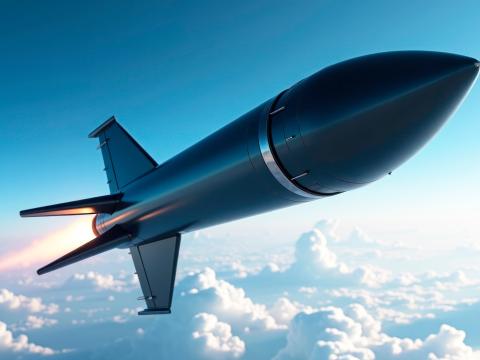Dressing the Wired Warrior
Programs seek to incorporate aerials, transmitters and wiring into battle gear and uniforms.
Warfighters soon may be wearing clothing with built-in radio antennas and global positioning system receivers. These items would be embedded in uniforms and equipment harnesses laced with internal wiring and circuitry that connect personal communications devices, computers and power supplies to form a single network.
As soldier enhancement programs such as Land Warrior and Objective Force Warrior begin to move from research and development projects to deployment, the advanced computer, visual and radio systems in each soldier’s kit need to work together. The next generation of battle gear will require data, power and sensor connections to be dispersed across a soldier’s body. An equally important necessity is maintaining unit coherency and communications in a highly dispersed, network-centric battlefield environment where troops will have to operate under all types of terrain and visibility conditions. Antenna systems built into essential equipment such as load-bearing combat harnesses will allow soldiers to remain in contact with each other in urban areas and in dense foliage while providing the maximum amount of mobility.
Responsible for testing, evaluating and selecting equipment before it is fielded, the U.S. Army Soldier and Biological Chemical Command (SBCCOM) is conducting general feasibility studies to explore potential applications for electrotextiles, conductive networks for computer peripheral devices and soldier conformal antennas at its Soldier Center in Natick, Massachusetts. Much of this research is conducted in conjunction with commercial firms such as MegaWave Corporation. The Boylston, Massachusetts-based concern has developed prototype soldier-conformal antennas and small global positioning systems for the command and other U.S. Defense Department programs. According to company president Glynda Benham, the system consists of a low-profile antenna built into a small fabric pouch that is attached to a soldier’s modular lightweight load-carrying equipment (MOLLE) vest near the shoulder like an epaulette.
The goal of the phase-two small business innovation research study with SBCCOM is to develop antennas that receive single channel ground and airborne radio system (SINCGARS) transmissions and enhance the performance of the soldier tactical radio in the 1800-megahertz to 2.4-gigahertz range. The soldier radio is a short-range, intersquad radio that operates at 1755 to 1850 megahertz. The company also is exploring the use of different types of conformal antennas in the very high frequency range of 30 to 88 megahertz.
One challenge researchers face is that an antenna must be able to receive signals while a soldier is in a variety of positions. In addition, the device cannot impede the warfighter’s mobility in any way, so it must be unobtrusive. Marshall Cross, MegaWave’s vice president for research and development, notes that the antenna can receive signals regardless of a soldier’s position because it incites equal horizontal and vertical polarization while still providing omnidirectional coverage.
An adequate level of reception, or gain, is another important factor for soldier conformal antennas, Cross says. To maximize signal reception, care must be taken in placing an antenna because equipment such as backpacks can interfere with the reception and transmission. “You’ve got to think about where you want to put these things because soldiers wear all kinds of stuff like bandoliers and hang equipment on their vests. You don’t want to have an antenna shadowed, covered or shielded by his supply of grenades,” he says.
MegaWave investigated mounting antennas on helmets but discarded the idea for practical and safety reasons. Helmet-mounted equipment presents difficulties because it requires the use of wires and plugs that can snag or get dirty, Cross explains. Ballistic protection was another concern because any addition to a helmet that changed its contour could compromise its structural integrity. He adds that some groups have investigated using autonomous, wireless helmet-mounted systems that would be connected to a soldier’s computer and communications systems by radio and act as a small wireless local area network. However, one drawback to this approach is that batteries would have to be placed in the helmet to power the systems there, increasing weight.
Antennas also cannot be worn very close to the body or they will lose too much signal strength, Benham cautions. Unless it is a small patch device with its own ground plane—an electrically conductive surface such as a small piece of metal that serves to reflect radio signals—an ultrahigh frequency (UHF) dipole antenna will quickly lose gain when worn close to the body, she says.
Another obstacle is receiving radio signals in a cluttered urban or heavily forested environment. Cross notes that the soldier radios operate at UHF frequencies of 1755 megahertz, which means that they have high path and foliage losses. However, the devices are intended for short-range use, with a range of roughly a quarter mile—sufficient for soldiers to keep in touch with their squad mates, he says. The radios also allow troops to coordinate efficiently with each other and maneuver in the dark because they can stay in touch with each other.
But even at short distances, the terrain can create difficulties for communications. As radio frequencies increase, free-space path loss increases every time the frequency is doubled, Cross explains. Foliage is extremely effective at absorbing certain frequencies of radio signals, with the loss following a very steep curve. “What you want to do is operate at low frequency so that you have low path loss and low foliage attenuation. The problem is the antennas get bigger. So as you go up higher in frequency, the antennas get smaller. They’re much easier to use, but the path loss goes up and so does the foliage attenuation. It’s a dilemma,” he says.
SBCCOM also is studying methods to reduce cables and other loose pieces of equipment by building cables and wires directly into soldiers’ gear. Flexible circuits sewn into webbing, belts and harnesses will allow soldiers to connect their computers and GPS equipment directly from plugs built into their belts. The advantage of this is that it avoids exposed wires that can get snagged or connections that will get wet and dirty, Cross says.
The technology to print circuits on cloth already is used by the commercial sector in applications such as clothing with built-in loudspeakers, buttons and switches that allow shirts to play music. These firms also have developed methods to print circuitry in inks that can be washed and dried, Cross notes. These materials are very durable and can be built up into layers to create microstrip transmission lines and antennas in a MOLLE vest without resorting to external wires. These systems would connect at the soldier’s belt where computer and radio equipment is carried. They would easily plug into the belt through pressure connectors, he says.
Because the GPS receivers contain noise amplifiers to help pick up signals when soldiers are under trees or in buildings, the epaulette devices require a small amount of power. However, instead of containing batteries, the transceivers will receive their energy from the soldier’s belt computer. The wiring in a MOLLE harness will connect the GPS device to the computer, which processes location signal data.
MegaWave’s initial contract was to develop conformal antennas for the Defense Advanced Research Projects Agency’s Military Operations in Urban Terrain program. That original antenna was incorporated into the shoulder pads of the Army’s previous generation of tactical load-bearing vests that are currently being replaced by MOLLE. Benham notes that the device only received a narrower bandwidth of 400 to 470 megahertz.
The current antennas under development for MOLLE are designed to receive both GPS and soldiers’ radio signals. Every tenth soldier, usually a sergeant or squad leader, also is equipped with a longer range SINCGARS radio in the 30- to 88-megahertz range that allows communication with the platoon leaders. MegaWave has delivered six of the GPS/soldier radio epaulette antennas to SBCCOM.
Cross notes that GPS reception capabilities are improving, explaining that the receivers installed in the epaulette-mounted systems are extremely accurate European and Japanese designs. He notes that the European model, made by Fastrax in Vantaa, Finland, is very accurate and can pinpoint its location within 1.5 to 2 meters in open ground and 3 meters under trees. The systems also work inside some buildings, but accuracy is reduced to 8 or 9 meters, he says. GPS repeaters also are commercially available. These devices can be placed on walls inside a building where they rebroadcast GPS signals.
Additional information on the U.S. Army Soldier and Biological Chemical Command and MegaWave Corporation’s military antenna programs is available on the World Wide Web at http://www.sbccom.army.mil and at http://www.megawave.com.



Comments